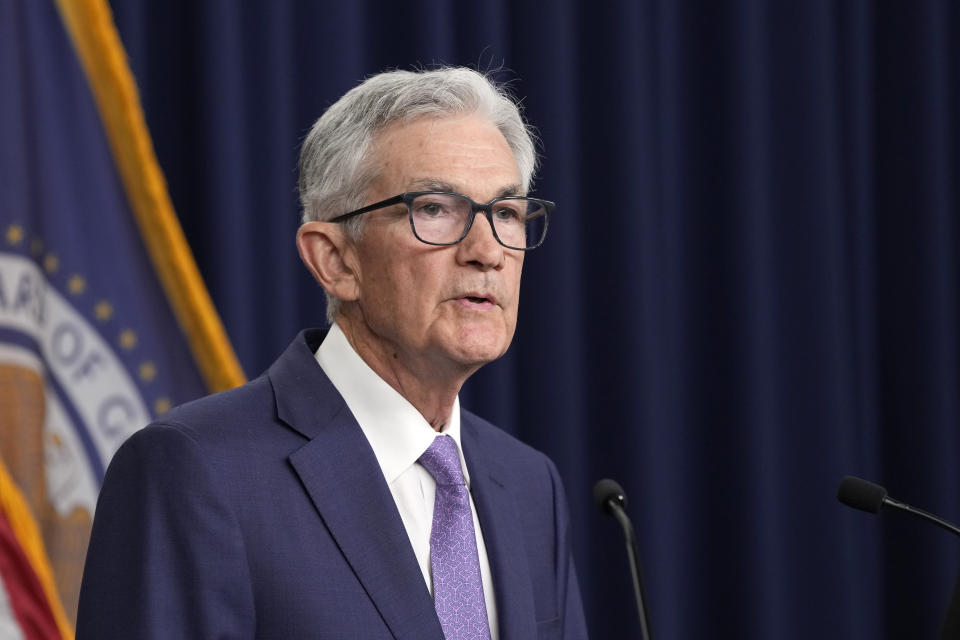A closely-watched report on US inflation showed consumer price increases cooled further during the month of June, according to the latest data from the Bureau of Labor Statistics released Thursday morning.
The Consumer Price Index (CPI) declined 0.1% over the previous month and increased just 3.0% over the prior year in June — a deceleration from May’s flat month-over-month increase and 3.3% annual gain in prices. Both measures beat economist expectations of a 0.1% monthly increase and a 3.1% annual gain.
Notably, this is the first time since May 2020 that monthly headline CPI came in below 0%. It’s also the slowest annual gain in prices since March 2021.
On a “core” basis, which strips out the more volatile costs of food and gas, prices in June climbed 0.1% over the prior month and 3.3% over last year — cooler than May’s data. Economists had expected a 0.2% monthly uptick in core prices and a 3.4% year-over-year increase.
It was the smallest month over month increase in core prices since August 2021.
Markets initially jumped (then fell) on the heels of the report, with the 10-year Treasury yield (^TNX) falling about 9 basis points to trade around 4.2%.
Inflation has remained stubbornly above the Federal Reserve’s 2% target on an annual basis. But recent economic data has helped fuel a narrative that the central bank should cut rates sooner than later.
Immediately following Thursday’s encouraging inflation data, markets were pricing in a roughly 87% chance the Federal Reserve begins to cut rates at its September meeting, up from 75% a day prior, according to data from the CME Group.
The data adds onto other rate cut signals across the labor market and economy.
On Friday, the Bureau of Labor Statistics showed the labor market added 206,000 nonfarm payroll jobs last month, ahead of the 190,000-plus expected by economists. However, the unemployment rate unexpectedly rose to 4.1%, up from 4% in the month prior. It was the highest reading in almost three years.
Notably, the Fed’s preferred inflation gauge, the so-called core PCE price index, showed inflation eased in May. The year-over-year change in core PCE came in at 2.6% over the prior year in May, in line with estimates and the slowest annual gain in more than three years.
“The decline in the consumer price index between May and June won’t stick but it strengthens the case for the Federal Reserve to begin cutting interest rates in September, particularly as the labor market has softened,” wrote Oxford Economics chief US Economist Ryan Sweet.
Still, the economist warned, “We caution about reading too much into the decline in the CPI in June and don’t believe that this is the new trend.”
Seema Shah, chief global stratgiest at Principal Asset Management, agreed the latest numbers “put us firmly on the path for a September Fed rate cut” but that “a July policy cut is still off the table.”
“Not only would it spark questions of ‘what do they know about the economy that we don’t know?’, but the Fed still needs to gather additional evidence of waning price pressures to be absolutely certain of the inflation path.”
Shelter prices cool, energy index falls
Notable call-outs from the inflation print include the shelter index, which rose 5.2% on an unadjusted, annual basis, a slowdown from May. The index rose 0.2% month over month.
Sticky shelter inflation has largely been blamed for higher core inflation readings, according to economists, but June’s print showed more signs of cooling.
The index for rent and owners’ equivalent rent (OER) each rose 0.3% on a monthly basis, slightly cooler than May’s rise and the smallest increases in these indexes since August 2021. Owners’ equivalent rent is the hypothetical rent a homeowner would pay for the same property.
Meanwhile, lodging away from home decreased 2% percent in June, after falling 0.1% in May.
Energy prices also fell again in June, driven by a significant drop in gas prices. The index declined another 2% over the prior month. On a yearly basis, the index was up 1%.
Gas prices fell 3.8% from May to June after falling 3.6% the previous month.
The food index increased 2.2% in June over the last year, with food prices rising 0.2% from May to June — proving to be a sticky category for inflation. The index for food at home rose 0.1% month over month while food away from home increased another 0.4%.
Other indexes that increased in June included motor vehicle insurance, household furnishings and operations, medical care, and personal care.
The indexes for airline fares, used cars and trucks, and communication were among those that decreased over the month, according to the BLS.
Alexandra Canal is a Senior Reporter at Yahoo Finance. Follow her on X @allie_canal, LinkedIn, and email her at alexandra.canal@yahoofinance.com.
Click here for the latest stock market news and in-depth analysis, including events that move stocks
Read the latest financial and business news from Yahoo Finance
EMEA Tribune is not involved in this news article, it is taken from our partners and or from the News Agencies. Copyright and Credit go to the News Agencies, email news@emeatribune.com Follow our WhatsApp verified Channel





